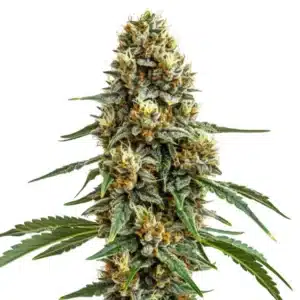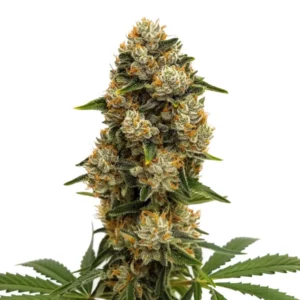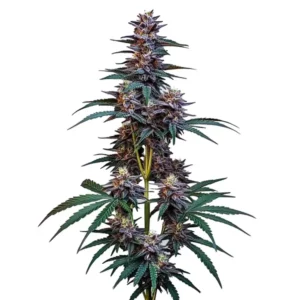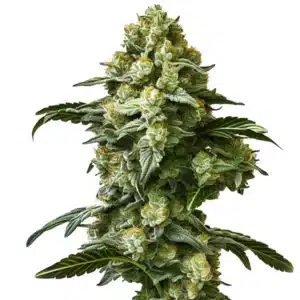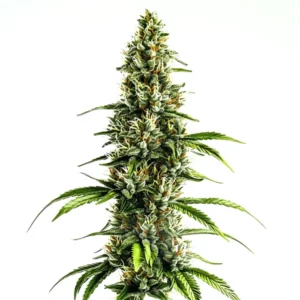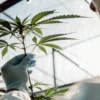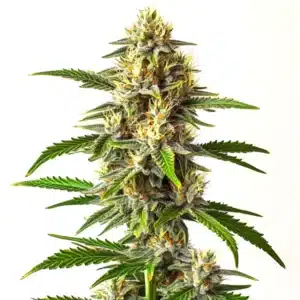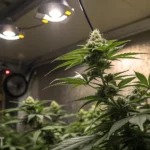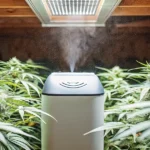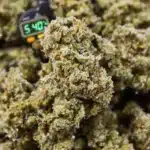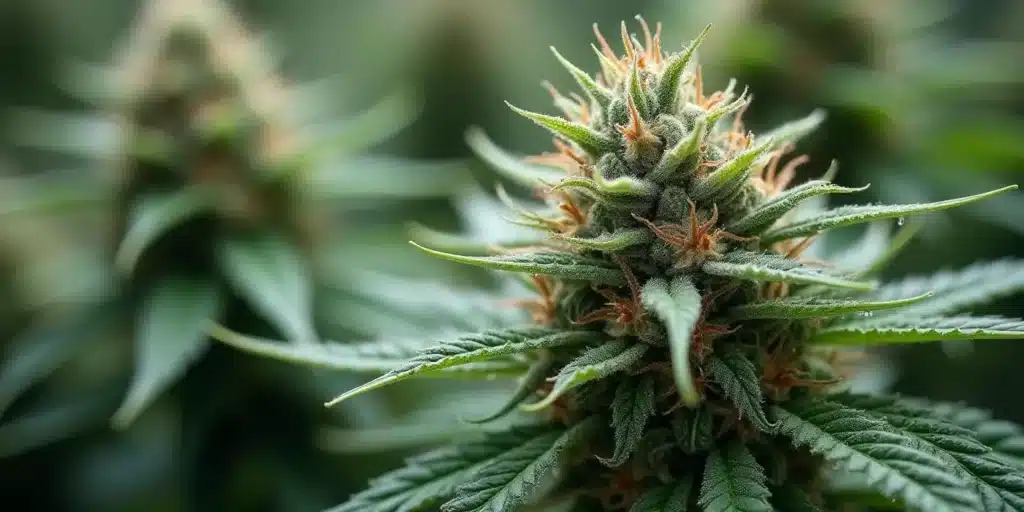
Bud Rot Prevention: Essential Tips for Healthy Cannabis Plants
Bud rot can be a real challenge for cannabis growers. This issue can harm your harvest and undermine all the hard work you’ve invested in nurturing your plants. This guide will walk you through various effective methods to help prevent bud rot, aiming for healthy, thriving cannabis plants. With foresight and the right strategies, you can look forward to a successful and plentiful growing season.
Bud Rot: The Basics
Bud rot, scientifically known as botrytis cinerea, typically thrives under damp and humid conditions. This mold takes on a gray or brown hue, consuming your buds gradually from the inside out. Early detection is crucial for managing this issue effectively. If left unchecked, bud rot can spread rapidly, ultimately resulting in a total loss of your crop.
Recommended Strains
Durban Poison
|
|
THC | 15% - 25% (Medium) |
|
|
Type | Feminized |
|
|
Yield | Medium |
|
|
Phenotype | 10% Indica / 90% Sativa |
Durban Poison Autoflower
|
|
THC | 21% - 25% (Medium) |
|
|
Type | Autoflowering |
|
|
Yield | Low |
|
|
Phenotype | 20% Indica / 80% Sativa |
It’s important to note that bud rot can occur in environments where humidity levels exceed 70%. While certain weather patterns can exacerbate this issue, indoor cultivators are not exempt, insufficient ventilation can create a perfect breeding ground for this mold. Therefore, growers must remain vigilant about maintaining optimal plant care and control over environmental factors.
Promos & Deals
Creating the Right Environment: Essential Conditions
Setting up and maintaining an optimal environment is critical in preventing bud rot. Focus on controlling temperature and humidity levels within your growing area. Aim for daytime temperatures in the range of 70°F to 85°F. During the night, a slightly cooler environment of 60°F to 70°F can inhibit mold development.
Moreover, striving to keep humidity levels below 60% can dramatically reduce the likelihood of mold growth. Tools such as dehumidifiers, fans, and ventilation systems can be invaluable in maintaining these conditions. Here are a few effective actions you might consider:
- Install exhaust fans to help lower humidity levels effectively.
- Utilize oscillating fans to promote better airflow around the plants.
- Ensure adequate spacing between plants to avoid overcrowding and encourage airflow.
Choosing the Right Strain: Resilience Matters
Different cannabis strains exhibit varying levels of resilience to issues like bud rot. By choosing a strain recognized for its robustness against mold, you can make a significant impact on your growing success. Strains such as Green Crack, Durban Poison, and Critical Mass tend to demonstrate a better tolerance under less-than-ideal conditions.
When selecting seeds, keep your growing environment in mind. If your locality has naturally high humidity, selecting varieties that have been bred for enhanced resistance to pests and mold can greatly improve your chances of a successful harvest. This informed choice not only boosts your success rates but also assures you peace of mind during the flowering stage.
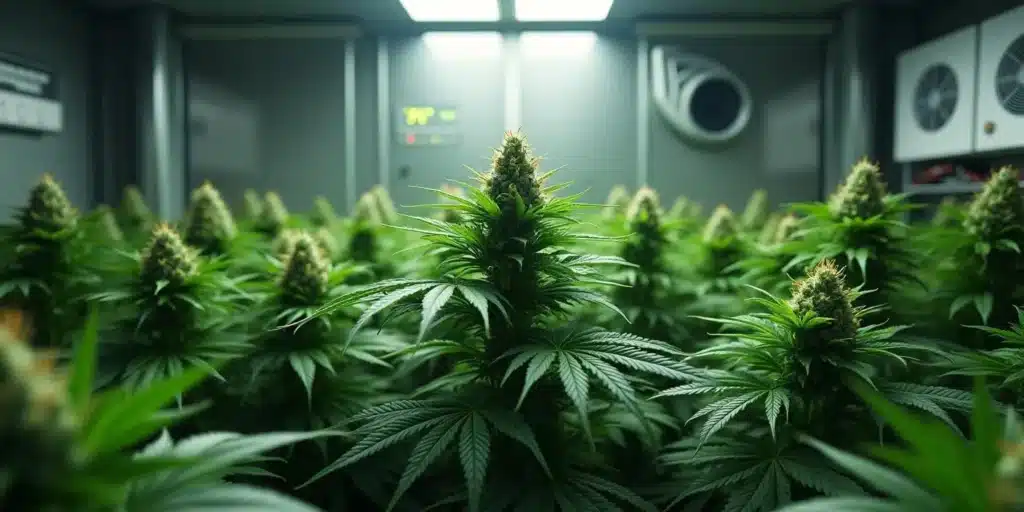
Proper Watering Techniques: Strike the Right Balance
Effective water management plays a vital role in minimizing the risks associated with bud rot. Overwatering can create excessive moisture, turning your growing area into a potential mold haven. Here are some best practices to guide you in watering your cannabis plants:
- Only water when the top inch of soil feels dry to the touch.
- Utilize well-draining soil and pots to prevent water from pooling.
- Adapt your watering schedule based on your plant’s growth stage and environmental conditions.
Consider implementing drip irrigation systems as they deliver consistent moisture without over-saturating the soil. Effective watering promotes vigorous root systems and contributes to the overall health of the plant, making it less susceptible to rot.
Enhancing Plant Health with Nutrients: Feeding for Robust Growth
Robust plants are naturally more capable of warding off threats such as bud rot. Providing your plants with the right nutrients and maintaining a balanced diet is fundamental for promoting health. Employing organic fertilizers enriched with nitrogen, phosphorus, and potassium can greatly support vigorous growth. A well-fed plant is better equipped to fend off diseases and mold.
Importantly, potassium plays a pivotal role during the flowering stage. This nutrient enhances plants’ overall health and resilience to diseases, making it a vital component for preventing bud rot. Here are some suggestions for your feeding schedule:
- During early growth, emphasize nitrogen-rich fertilizers for leafy development.
- Diverse nutrient formulas should be shifted toward phosphorus and potassium as you transition to the bloom stage.
- Adopt a regular feeding schedule to monitor and maintain nutrient levels effectively.
Regular Monitoring and Maintenance: Stay Vigilant
Constant monitoring is crucial to prevent bud rot from taking hold. Regularly inspecting your plants enables you to catch any initial signs of mold before it has the chance to spread. Keep an eye out for alterations in color, texture, or unusual growth patterns, as these can signal a problem. Early intervention remains the most effective remedy.
In conjunction with visual assessments, consider adopting these key maintenance strategies:
- Regularly remove dead leaves or debris surrounding the plants to enhance airflow.
- Prune lower leaves and branches that tend to collect moisture, which can be a breeding ground for mold.
- Ensure that all gardening tools are clean to prevent the transfer of mold or pathogens.

Harvest Timing and Techniques: When and How to Harvest
Timing your harvest correctly is crucial in the fight against bud rot. Delaying the harvest can increase the risks of mold affliction. Pay close attention to the development of trichomes, which can guide your timing; when you notice a mix of milky and amber trichomes, it may be the right moment to harvest.
When harvesting, exercise gentle techniques to avoid bruising the delicate buds. This care in handling is important for maintaining structural integrity, which in turn limits potential moisture accumulation. Once harvested, follow meticulous drying and curing processes to protect the quality of your yield:
- Hang buds in a cool, dark, and well-ventilated space to dry them properly.
- Store dried buds in airtight containers to preserve their quality and flavor.
- Limit handling of the buds until they are fully prepared for consumption to reduce breakage.
FAQ: Questions About Bud Rot Prevention
What are the main causes of bud rot?
Bud rot is primarily caused by high humidity levels and poor air circulation. This condition often develops in damp environments, especially when plants are overcrowded and lack sufficient airflow. By monitoring humidity and ensuring proper ventilation, you can significantly minimize risks associated with bud rot.
How can I tell if my plant has bud rot?
Signs of bud rot typically present as brown or gray mold on the buds, an unpleasant sour or musty smell, and a mushy texture in affected areas. Regular inspection for these symptoms is invaluable; when detected, it’s vital to take immediate action by removing the impacted buds.
Is bud rot treatable once it has started?
While treating bud rot can be challenging once it takes hold, removing infected buds is the most effective way to halt its progress. Monitoring and adjusting environmental conditions after detection can also help lessen the spread of the mold.
Which strains are best for preventing bud rot?
Strains recognized for their resilience against mold include Green Crack, Durban Poison, and Critical Mass. Opting for these varieties can significantly mitigate risks, especially in areas with higher humidity levels.
What environmental conditions are best for avoiding bud rot?
Creating an environment with daytime temperatures between 70°F to 85°F and ensuring that humidity levels stay below 60% can substantially reduce the likelihood of bud rot. Utilizing air circulation devices and dehumidifiers further supports maintaining these optimal conditions.
Are there specific fertilizers that help prevent bud rot?
Balanced fertilizers rich in potassium can enhance a plant’s natural defenses against mold, especially during the flowering stage. Regularly incorporating these essential nutrients into your feeding routine can bolster overall plant health and resilience.
What preventive measures can I take during flowering?
During the flowering phase, prioritize good airflow around the plants, maintain humidity levels vigilantly, and keep a consistent feeding schedule. Additionally, minimizing moisture accumulation around the buds through careful pruning and thoughtful watering can further reduce risks of bud rot.
By implementing these best practices, you significantly enhance the health of your cannabis plants and reduce the risk of bud rot, paving the way for a bountiful harvest. Happy growing!


